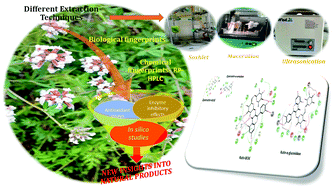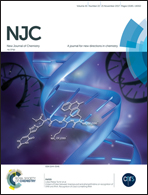A comparative in vitro and in silico study of the biological potential and chemical fingerprints of Dorcycinum pentapyllum subsp. haussknechtii using three extraction procedures
Abstract
We probed into the effect of different extraction procedures (maceration, Soxhlet extraction, and ultrasonication) on the phytochemical profiles and bioactivities of ethyl acetate, methanol, and water extracts of Dorcycinum pentapyllum subsp. haussknechtii. The antioxidant (ABTS and DPPH), reducing power (CUPRAC and FRAP), phosphomolybdenum, metal chelation, and enzyme inhibitory activities (acetylcholinesterase (AChE), butyrylcholinesterase (BChE), tyrosinase, α-amylase, and α-glucosidase) were determined. The total phenolic and flavonoid contents together with the phenolic compounds were evaluated by RP-HPLC. Molecular modeling calculations were applied to relevant bioactive compounds observed in the extracts and docked to targeted enzymes used in order to elucidate their docking characteristics and possible interactions. The type of extraction technique was found to affect the concentration of phytochemicals (maceration, Soxhlet extraction, and ultrasonication gave 3052, 3616, and 3252 μg g−1 extract, respectively). The highest values of the total phenolic content and antioxidant activities followed the same order, highlighting a possible relationship between strong antioxidant action and high phytochemical content. Ethyl acetate extracts were potent inhibitors of α-amylase while methanol extracts showed pronounced activity against α-glucosidase. Methanol extracts of D. pentapyllum were potent inhibitors of AChE. BChE was inhibited by water extracts. The best docking pose and ΔG binding energy calculations revealed that quercetin had a preference for α-amylase and AChE, whereas rutin was capable of docking efficaciously to BChE, α-glucosidase, and tyrosinase. Evidence from the present study advocates the need for exploring different extraction techniques in an endeavour to discover unique bioactive lead compounds that could target specific ailments.



 Please wait while we load your content...
Please wait while we load your content...